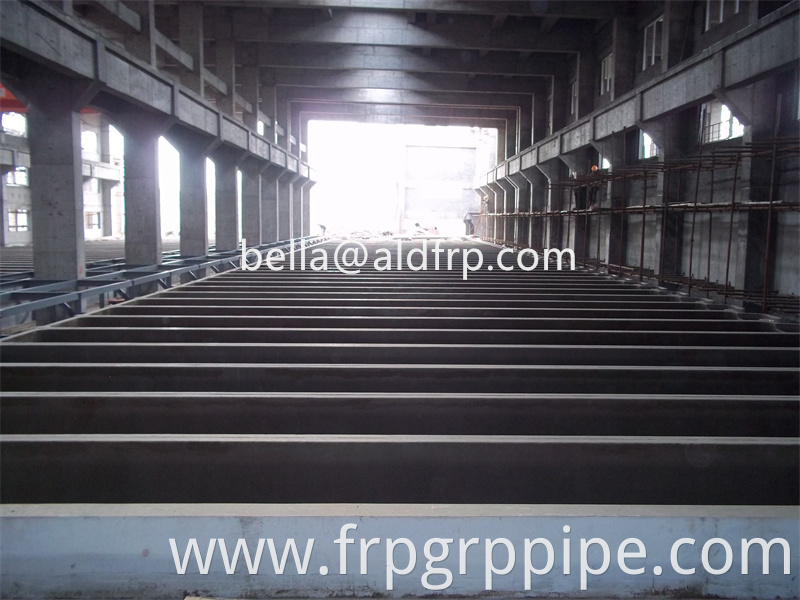Electrolytic cells are designed, built and installed to satisfy the most stringent requirements requested by tankhouse operators worldwide. In most cases their main request is to guarantee full operating availability throughout the plant's lifespan, maximizing production of high-purity metal (copper, zinc, nickel, cobalt, lead or other nonferrous metals) with absolute safety for people and the environment. Additionally, cells must accommodate changes for continuous improvement of the electrolytic process, integrating efficiently with upgrades of complementary equipment such as anodes, cathodes, cap, boards, overhead crane electrolyte agitation systems, acid mist control devices, thermal insulation among many others.
2. Structure Electrolytic cells are cast monolithically based on a patented, three-layer composite material system: The Internal layer is a monolithic tank made with multiple layers of fiber-reinforced vinyl ester resin (FRP) complying with chemical barrier international norms that assure long-term impermeability and corrosion resistance. The Intermediate layer is the structural core made with polymer Concrete, with a patented formulation to achieve a low coefficient of thermal expansion, providing long-term structural integrity with low thermally-induced stresses The External layer is a standard seal layer of FRP that further protects the structural core from electrolyte splashes and spills. Optionally,this external seal may be specified with multi-layered oriented fiber reinforcements to guarantee trouble-free operation in unusually extreme operating environments.
Long-term impermeability, free of corrosion, 20+ years warranty
Our monolithic internal tank manufactured with multiple layers of fiber-reinforced premium vinyl ester resin. It has continuous service without leakage, free of corrosion and structural flaws which operating under normal conditions as specified for each project.
Swift, accurate and less costly installation
Electrolytic cells include features that allow reduction of 25% or more in time needed for cell erection, alignment and leveling compared to time required with conventional polymer concrete cells. Dimension tolerances for electrolytic cells are consistently tight, simplifying installation in the most demanding applications,including plants with automated crane systems.







































































